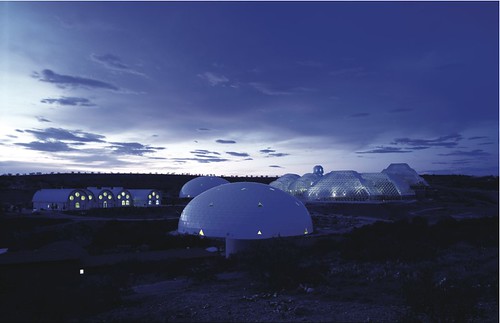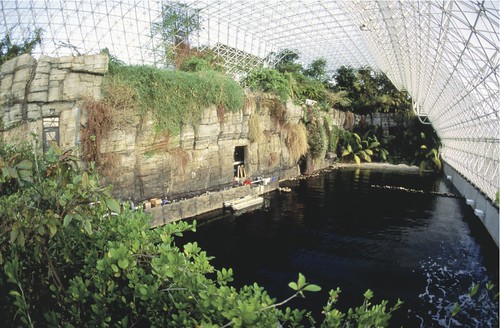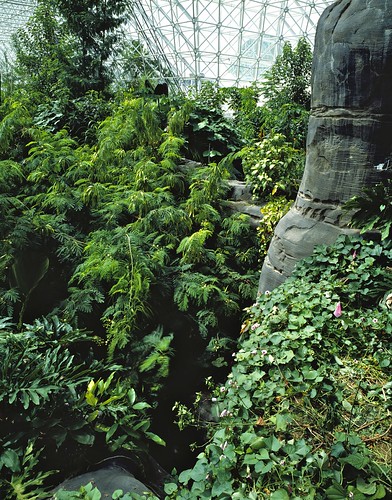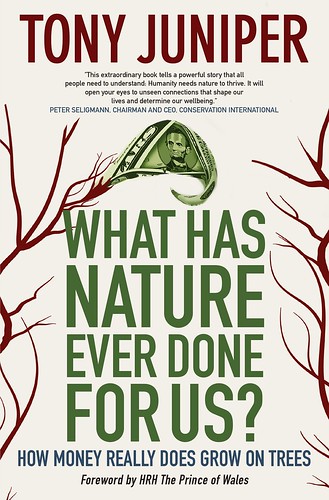PROLOGUE:
100: Percent of human support systems dependent on Nature
1: Number of known planets capable of supporting human needs
2 to 4 Billion: Additional people dependent on Nature in 2050
WHAT HAS NATURE EVER DONE FOR US? Vultures – and, to be specific, Indian vultures – provide an example. These birds are today virtually extinct across the subcontinent, a fact that has been barely reported in the West, and yet has had huge implications. For when India’s vultures were almost gone, it became apparent that they had been supporting the well-being of hundreds of millions of people. The reason was simple.
For centuries, India’s vultures performed an essential cleaning function, eating the flesh of the many dead animals that littered the countryside. A hungry flock would clean up the carcass of a dead cow in a matter of minutes, leaving only bones. So when the vultures disappeared, and the putrefying fly-ridden corpses were left to rot under the hot Sun, the effects were disastrous and wide-ranging. The Indian vultures had been inadvertently killed off by anti- inflammatory drugs injected in cattle and buffalo. When these farm animals died, residues left in their carcasses were ingested by vultures – and it proved lethal to them. This soon became a problem, not least because India’s forty million or so vultures were between them eating about 12 million tonnes (tonnes are equivalent to 2,304.6 lbs) of flesh each year. With no vultures to clean up, there was an explosion in the population of wild dogs, which had more food. More dogs led to more dog bites, and that caused more rabies infections among people. The disease killed tens of thousands, in the process costing the Indian economy a figure estimated in excess of $30 billion.
The vultures are just one among thousands of examples of natural services that are (or were) provided for free by Nature, and which are being removed to our cost. That cost is now the subject of a new branch of economics, whereby researchers are beginning to put financial values on Nature. The hope is that through knowing more about the value of Nature it will be possible to create the tools needed to reflect that value in economic transactions. Should this happen on a sufficiently large scale, then the impacts could be profound, for the numbers being generated are huge – in many cases dwarfing the value of more traditionally quantifiable economic activities.
Natural services are beginning to attract the attention of not only academic economists and ecologists, but also governments, companies and international agencies. And that is what this book is all about – an explanation of what Nature does for us, why it is so important, and what we can do to ensure Nature keeps on doing it.
This vast and rapidly accumulating body of research I believe signals an emerging new era of debate. For while much of the environmental discussion in recent years has been concerned with climate change, carbon emissions and how to cut them, a new wave of attention is breaking, focused on what Nature does for us (and finding ways to keep it doing what it does).
From the coral reefs that protect many coasts to the pollinating insects that help enable much of our food to grow, awareness and attention are switching to the economic value of Nature, and crucially, how to protect that value.
Before embarking on the journey to explore how these values are essential for our continued welfare and development, I’d like to start by getting some measure on how Nature works, and what it takes to replicate its functions. So our first port of call is to a remarkable experiment – one that might have more relevance to the future than was appreciated even by its visionary founders.
BIOSPHERE 2
During the early 1980s, in the shadow of the Santa Catalina Mountains of southern Arizona, plans were laid for a remarkable and unique experiment that would shed light on how our planet sustains life: the creation of a self-contained biosphere.
This ambitious scheme eventually came to fruition a decade later, when for two years a group of eight people became the first in history to live in a manmade biosphere. It was a project that threw into perspective just how complex, elaborate and linked is our own natural biosphere – and just what it would take if we had to try and replicate or recreate it.
The Earth’s biosphere is basically the sum of all the different living systems and the relationships they have with each other and with the non-living parts of our world, such as the water, air and rocks that enable them to function. It is the self-regulating zone of life, shielded from the icy vacuum of space by the atmosphere on which it depends.
For the first manmade creation of a biosphere, the terrain chosen was that part of the southwestern USA where the giant saguaro cacti so reminiscent of classic Western films grow. It is a remarkable environment. From hot flower-rich bushlands, the mountains rise to above 2,700 meters, where snow fields accumulate in winter, feeding streams and pools as they melt in summer, Nature abounds. On the mountain slopes, where it is cool and wet, there are lush forests of oaks. Further up still are stands of Ponderosa Pines. The unique combination of conditions sustains an impressive diversity of animals and plants. Orange-crowned warblers, broad-tailed hummingbirds and cordilleran flycatchers inhabit the oak forest. At higher levels, pygmy nuthatches and northern ravens are found.
The Santa Catalina range lies just to the north of Tucson, a teeming city of over half a million souls, with grids of traffic-packed streets, separated by blocks of air-conditioned buildings. These two worlds – one set out on right angles of asphalt, concrete, steel and glass, the other a complex web of cycles, patterns, loops, feedbacks and flows – seem utterly distinct, yet are in fact very much connected. Both systems – one of forests and deserts, the other of roads, buildings, homes and shops – are contained inside the same biosphere. All the food, water, fuel and raw materials needed to keep the city’s vibrant economy humming along are derived from the biosphere, and the nonliving systems that interact with it.
The Biosphere complex – named Biosphere 2 (Biosphere 1 being the Earth’s) – stands about an hour north of Tucson, in a quiet and remote area in the foothills on the far side of the mountains. It looks like a vast greenhouse, made from glass and steel, with a rectangular area attached to six half-cylinder shaped buildings, over an area the size of two and a half football fields. A pair of large white domed structures flanks the main building, while a scatter of high tech facilities nearby house research apparatus, power and cooling plants and student residences. It is an impressive sight, conjuring in the mind’s eye a twenty-first-century Moon base as seen from the perspective of a 1970s science fiction film director.
Built between 1987 and 1991, Biosphere 2 was constructed to study the complex web of relationships and interactions that sustain the Earth’s life systems, while at the same time supporting eight humans. Its central characteristic was that it would be completely cut off from the rest of the world.
During construction over 6,000 glass panels were laid on a steel space frame. The floor was made of concrete, but to ensure a tight seal, this was covered with corrosion-resistant stainless steel. It was totally airtight, far more so than the space-training facilities at the Kennedy Space Center, and thirty times more tightly sealed than the Space Shuttles then being sent outside the Earth’s atmosphere by NASA. It set records as the most tightly sealed large-scale system ever constructed.
To enable the system to stabilize air pressure, special variable volume chambers called ‘lungs’ were developed. These were part of the closed system and comprised underground cave-like structures connected to large rubber diaphragms. Air moved into or out of each chamber from or to the biosphere structure as the membranes expanded and contracted, gently rising and falling to keep the air pressure inside Biosphere 2 in perfect equilibrium with that outside. This aspect of the complex would prevent the sealed structure from either exploding or imploding as a result of the pressure changes caused by the daily cooling and heating of the system as the sun rose and set.
Below ground was laid the technical infrastructure of winter heating and summer cooling pipes. Electrical power was supplied from an on-site natural gas generator via airtight power cable connections.
The idea of creating a fully sealed biosphere was the dream of John Allen. He was interested in long-distance space travel and whether it would be possible to maintain a biosphere that could sustain people in isolation for years at a time. He was also motivated by better understanding how life systems work here on Earth. He had spent decades thinking about biospheres and how they worked, and by 1984 had completed the concept for Biosphere 2. He was 54 and in that year founded a company called Space Biospheres Ventures, to set about the gargantuan task of construction.
Allen’s focus was somewhat different from most mainstream scientists. Typically, biological and ecological research is devoted to better understanding the individual parts of systems, whether they are genes, species or even ecosystems. Allen wanted to know how the whole thing worked. There was a name for his relatively new branch of science – biospherics: the study of biospheres. It went beyond ecology, to a level where the functioning of all ecosystems together is the subject under investigation.
For this purpose, he was less interested in materials and things, and more interested in relationships – the interactions that enabled a self-sustaining biosphere to function. An additional research aim was to look at biospheres in relation to other systems and to find out how to best achieve harmonization between cultural, technological and ecological systems. This was a project of vast ambition but Allen was equipped with the diverse range of interests and experience to make it possible. A traveler, veteran of the Korean War and a volunteer at a mountain medical center during the Vietnam War, he was also an actor, writer and poet. He was a businessman and had been awarded an MBA from Harvard. His work had taken him to all parts of the world, and on his travels he had been inspired by the diversity of living systems – from deserts to the open ocean and from the rainforests to the fields and farms of Tuscany. He was also an engineer and scientist and well versed in the technical challenges of building and maintaining a fully closed system.
He had been influenced by many thinkers, including the Russian scientist Vladimir Vernadsky, who during the late nineteenth and early twentieth century had made great advances in understanding biospherics at a planetary level. Far ahead of his time, Vernadsky was hardly heard of in the West, in part because little of his work had been translated into English. Allen visited Russia to find out more and to learn of experiments undertaken there as part of the Soviet space program. One study, called Bios 3, was taken forward during the 1970s and 1980s at the Institute of Biophysics in Krasno- yarsk in Siberia. In this program two or three people had been kept healthy in a closed system for six months. They had breathed recycled air, drank recycled water and produced about half their food inside a sealed unit.
The Russians had hundreds of doctors looking at a great mass of health data collected from the cosmonauts who took part in the study. The Bios 3 scientists, as well as those at the main Russian space research facility in Moscow, made their data available and sent researchers to work with the Biosphere 2 team. This input proved invaluable for Allen and his team in showing how it would be possible to keep the eight scientists healthy and safe inside his complex. Some had predicted that bacterial and fungal infections and trace gas accumulation would soon damage the wellbeing of humans living in a closed system, but the Russian data suggested otherwise.
To inspire the design for Biosphere 2, Allen took his construction team to major architectural sites around the world. They visited Chartres Cathedral, the Roman aqueduct at Pont du Gard near Nîmes and walked the silent lines of ancient stones at Carnac in France. They studied the Temple of Heaven in Beijing. They went to the Taj Mahal in India and the Pantheon in Rome; to Uxmal in the Yucatán of Mexico, and to the Inca city of Machu Picchu high in the Andes of Peru. They searched for the designs that would best under- line the purpose of the life system they planned to construct.
When I met up with Allen, he was 82, but still retained all his passion for Biosphere 2.Wearing a well-worn brown leather aviator’s jacket, his blue eyes dart and sparkle as he told me its story. “It was initially a Russian and American joint venture,” he began. “It was the time of the Cold War and cooperation with the Russians was only made possible by an agreement between Presidents Ford and Brezhnev that made an exception on certain aspects of space research. We signed a deal with the Russians at the Royal Society, London. It was organized by Keith Runcorn, the man who first set out the mechanics of continental drift.”
Allen and his team expended a great deal of effort in seeking out the correct site for such an ambitious venture. It would need to be accessible, at the correct latitude and with sufficient sunlight to enable the system to work. After a long search the team settled for Arizona. “We bought a ranch near the Santa Catalina Mountains. It was an old Motorola research center,” he recalls.
Having acquired a suitable location, Space Biospheres Ventures set about the vast design challenge. This went far beyond architectural questions. Temperature had to be maintained within specific limits, while all repairs to apparatus had to be done in a machine shop inside the sealed complex. No spare parts would be available from outside once the system was sealed. The glass structure had to be strong enough to resist storms, hail and tornadoes, but not cut down the sunlight that would be the source of all the productivity that would sustain life inside – including the people.
Much of their attention was devoted to landscape design, in order to make the most of both light and water, and also to ensure the environment inside Biosphere 2 sustained the human spirit. From an outcrop of limestone rocks inside the complex were views of the tower which rose from the center of the roof of the main structure. Looking the other way, the occupants could enjoy haunting views of the northern Sonoran Desert. In quiet moments they might imagine echoes of the Apache Wars which sparked off there in 1851, ending only in 1886 with the death of Geronimo.
Inside this remarkable facility seven biomes were constructed. Biomes are the building blocks of a biosphere – the largest unit of the Earth system, short of the entire planet. Allen is very clear as to why this was the correct level for planning the complex. “The biome was the key unit. Ecosystems are way down, three levels down in fact. From the biosphere, to biomes and bioregions, you come to ecosystems next. Ecosystems can change, and quickly. We need to see ecosystems as part of the wider system. Ecosystems are very often transient features of the landscape. Biosphere 2 was a model for lifting up our analysis, to see the bigger picture.” With this objective in mind, models of five world biomes were planned, based on rainforest, coral reef, mangrove wetlands, desert and savannah. Two other biomes set out to replicate manmade systems – agricultural landscapes and an urban area. The farming biome was developed first, then the wilderness biomes, and finally Biosphere 2’s analogue of a city. Once the broad design of the complex was complete, Allen handed over leadership of the project to his trusted colleague Margaret Augustine. Allen wished to concentrate on science and engineering matters and to become more involved with the detail of how the system would work. He was not short of challenges, not least in relation to how the biomes would be built up.
Teams of experts then set about detailed design of the biomes, choosing the species and the types of ecosystems that would be included. By far the most complex and challenging to design were the agricultural, rainforest and coral reef biomes.
Abigail Alling, a marine biologist and whale specialist, was in charge of the coral reef, ocean and mangrove systems. She found particular inspiration in Caribbean marine ecosystems, where her team studied corals in the reef lying off the coast of Belize, though the living corals were collected at Akumal in the Yucatán of Mexico, due to its proximity to Arizona. The distance was a major factor, as the coral would need to be transported quickly, complete with life support systems to prevent it from dying, and an ocean system to which it would be introduced up and running ready to take it. The Mexicans organized a special police escort so as to speed the trucks along as quickly as they could. The coral arrived safely and was introduced to the waiting marine system. The mangrove trees and other wetland plants were collected in Florida and also trucked by road to Arizona.
Sir Ghillean Prance, then at the New York Botanical Gardens and later director of the Royal Botanic Gardens in Kew, was a key adviser in the design of the rainforest system and was aided by leading Harvard rainforest ecologist Richard Evans Schultes, who is widely seen as the originator of ethnobotany – the study of the relationships between plants and human societies. Prance came up with the design for a cloud rainforest inspired by Arthur Conan Doyle’s The Lost World. He was also assisted in this endeavor by the government of Guyana, which arranged the collection of suitable plants. Lowland riverine forest of the kind that floods each year in the Amazon Basin was also included in the rainforest biome. Water would be the life-blood of Biosphere 2, and the rainforests at the heart of the system would be vital in ensuring its continuing circulation. Reflecting on the challenges that were encountered in creating the biomes, Allen told me that “Rainforests are the most complex – probably by orders of magnitude more than some others. Prance and Schultes did a great job. They looked at the rainforest as a total system, including the Indians.”
Linda Leigh, a professional range ecologist, led work on the terrestrial wilderness biomes, including the desert, which was based on the fog deserts of Baja, California. She also assisted with the development of the savannah, which was in part inspired by Allen’s travels in the 1960s across East Africa.
Biosphere 2 would contain a total of about 3,800 different kinds of animals and plants. In order to maximize the ability of different bits of the system to continue functioning in the artificial conditions, an approach called “species packing” was adopted. This basically set out to ensure that if one kind of animal or plant were lost, another that performed a similar function in a particular ecosystem, such as part of the ocean or rainforest, was there to continue its work – for example, as a predator, or food for another species. A high level of extinction was expected in this microcosm and the strategy to maximize diversity from the start would, it was believed, lead to more resilience and long-term stability.
The agricultural system was designed by the Environmental Research Laboratory of the University of Arizona, with consultation from the Institute of Ecotechnics, and managed inside by Sally Silverstone and Jane Poynter. Sally grew up in London but had worked in Kenya and India with farmers in programs to boost local food security. She had also worked with the Institute of Ecotechnics on a sustainable forestry project in a rainforest in Puerto Rico. Jane was also British, with an agricultural background including experience of farming in harsh climates in the USA and Australia, where she had mastered crop propagation under very challenging climatic conditions.
The plan was to create an ecologically stable, disease resistant, tropical agriculture biome that was totally sustainable. It would need to be highly productive, supplying all nutritional and health needs, and easy to operate. It took three years before the system was sealed to develop the complex soils needed to get productivity up and the plants used to the growing seasons inside. Some 1,500 different crop cultivars were studied on site and at the University of Arizona Environmental Research Lab before choosing 150 of the most productive that they believed would best sustain the needs and health of the human crew.
Allen was very clear that the agricultural team should not copy modern farming techniques that are based on heavy chemical inputs, and instead should favor conventional methods. For health reasons, no toxic chemicals were to be used and crop pests and diseases would need to be controlled through biological means. Toxic chemicals would be unthinkable in a tightly sealed world with very fast cycling times – what was in the water would quickly be in the drinking water. With this steer, the team set out to mimic farming systems that had been used for centuries and longer in Asia, Polynesia, Europe and the Americas. By choosing several of these systems to work alongside one another, it was believed all dietary elements could be provided.
As well as a wide variety of nutritious crops – including rice, bananas, papayas, wheat, sweet potatoes, beats, peanuts, cowpea beans and vegetables – the farming system was carefully planned so as to integrate animal husbandry. Domesticated animals that were to accompany the crew on their two-year mission included four pygmy goats from the plateau region of Nigeria, thirty-five hens and three roosters (a mix of Indian jungle fowl, Japanese silky ban- tam, and hybrids of these), three small pigs (two sows and one boar), and tilapia fish grown in the rice and azolla pond system that originated thousands of years ago in China.
The chickens, goats and pigs would not only provide meat, eggs and milk, but also companionship. They would also recycle much of the tough plant material that humans could not digest or use in other ways. And the agricultural system was not only designed around the nutritional requirements of the crew. The landscape was carefully planned for their aesthetic needs. It was, in particular, inspired by views that Allen had seen on visits to Tuscany, where he observed that the growing of food had been beautifully incorporated into the landscape.
Allen and his team were acutely aware that at the heart of the functioning of the terrestrial biomes, and the agricultural one in particular, was one of the least known natural systems of all – the soil. The dark world of soil swarms with numberless microorganisms, worms and fungal threads that challenge even the most thoughtful ecologist with a vast complexity of relationships. These interactions are not only vital for plant growth and digesting and recycling nutrients, but are also important for keeping water and the atmosphere healthy.
A never-ending dance of give and take between soil and air helps determine atmospheric composition. The soil would be a vital aspect in determining whether or not the experiment would work, and great care was taken to get it right. Allen ordered 500,000 earth- worms to be introduced. “That was straight from Charles Darwin,” he says. “The worms thrived, and so did the crops.”
The Biosphere 2 team was also aware of the fundamental importance of bacteria in shaping the state of the system they were building, not least the role they would play in the soil. Bacteria are engaged in a constant process of genetic exchange, enabling them to quickly adapt to changing conditions, and to change conditions themselves. This is one of the most dynamic aspects of living systems. In order to enable full adaptability in the system as it settled down and changed over time, Biosphere 2 was equipped with a broad set of bacteria and dozens of soil types. This would enable biological responses to changes that might take place, such as a build-up of methane gas. If there were bacteria present that were able to metabolize these gases, then that would help ensure the stability of the system. Allen believed that by starting with a wide range of bacteria it would be more likely that their orgiastic gene exchanges would help move the system towards a more steady state.
The carefully designed natural systems would of course be vital for sustaining the people, including in their mini-urban area. Biosphere 2’s analogue of a cityscape, where the crew would live and work, was based on leading designs that would meet both the practical needs of the crew and their psychological wellbeing. All materials were carefully selected to avoid any toxic build-up once the system was closed. The Wool Bureau sponsored fitting of 100 percent wool in carpets and other fabrics so as to prevent any chemical leakage that might accompany the use of synthetic materials.
Mark Nelson, one of the eight Biosphere 2 crew who would be sealed inside the system when it was ready, was struck by the different mind-set that had to be adopted during this design stage: “The process of designing the biosphere was incredibly interesting. Engineers and top ecologists hardly ever sit down in the same room and design something together. The engineers realized they could do brilliant and challenging engineering when it dawned on them that by contrast with their normal work their job was not only to protect humans, which is what they generally do, but to protect the life which sustains the humans. It was to be not just a stunning piece of design and engineering, but would have to sustain the microbes and everything else, if the system was to be healthy and supportive of life.”
Mark Van Thillo was in charge of the vast array of machines and equipment needed to keep the vital infrastructure working. The internet was not yet in widespread use, but technology was harnessed to create what was probably the first truly paperless office. Taber MacCallum took charge of setting up a cutting-edge analytical lab to support the scientific investigations that would be undertaken. Roy Walford prepared the top-level medical facilities that would permit the critical real-time monitoring of the health of the biospherian team.
It was in the design of the living and working facilities where links between the biosphere (the world of life) and ethnosphere (the world of human culture) were most obvious. Allen set out to ensure that the world of Nature and the world of human needs and desires were designed together. Six of the biomes would need to flourish so as to support the seventh: “the city.” This would need to meet human needs while avoiding toxic build-up, at the same time as all waste and water were recycled. Conditions would need to remain stable within life-friendly boundaries, and Biosphere 2’s equivalent of an urban area would have to play its part in promoting such an outcome.
Allen’s idea was to promote co-creation, whereby both systems thrived and where one (the culture of the people) did not parasitize the other (Nature). This was in part a philosophical approach, but also a very practical one. When they were sealed in, the crew would not be able to act as if detached from their actions. They would need to pay attention to how they lived. Due to the small scale of Biosphere 2, compared with that of an entire planet, the cycles that supported life would work much faster, and the consequences of any changes or decisions taken by the crew would thus be seen much quicker.
For example, Allen expected that after closure the carbon cycle would work at least 1,000 times faster than outside. To quickly pick up on changes in environmental conditions and technical functioning, more than 1,000 sensors of different kinds were distributed throughout Biosphere 2. These would be vital both for gathering data and in ensuring the crew was kept out of danger.
To achieve the complete integration of the system so that it worked as a single unit, it was designed both from the bottom-up as well as the top-down. From top-down the biosphere would comprise seven major biomes, made up of bioregions and ecosystems. From the bottom-up the team worked with microbes, to larger organisms, to biochemical functions, to communities of animals and plants, to ecosystems, landscapes, bioregions, biomes and finally the biosphere itself.
The whole system was pieced together from the small to the large, as well as from the large to the small. And the biosphere was carefully designed so as to interact with the air and water in order for the whole thing to be self-sustaining. While modern thinking is often based on the idea of “the whole being greater than the sum of the parts,” Biosphere 2 went a big step further. The design aim in this case was for “the whole to be seen in all of the parts.”
As the system was assembled, the biomes and bioregions invisibly synergized with light and microbes to create a healthy and sweet atmosphere. But could eight people live in this closed microcosm, complete with their mini-city, and come out healthy at the end of a two-year experiment? Would the farming system produce enough food? Were there unforeseen sources of trace gases that might render the experiment unviable? Many experts predicted the rapid demise and death of some of the biomes. Others questioned how long the system would last before it suffered an ecological collapse.
Part II of the prologue is available here.













